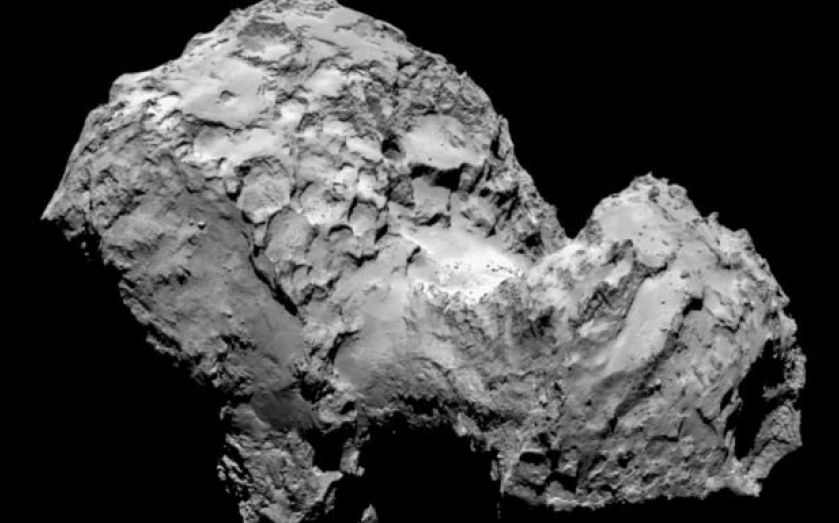| Updated:
Rosetta arrives at its destination in “sexiest, most fantastic mission ever”

The thought of travelling four billion miles in ten years might make you feel dizzy, but it's exactly what the European Space Agency (ESA) Rosetta space probe has managed to do in what has been described as the “sexiest, most fantastic mission ever”.
Rosetta, which was first launched in 2005, has been hurtling towards comet 67P/Churyumov-Gerasimenko for the last eight months after being awoken from two-and-a-half years of deep space hibernation in January.
Because the comet has spent its life travelling so far away from the sun, its composition has remained largely unchanged since the birth of our solar system 4.6bn years ago.
This is about to change, however, as the comet starts to travel towards the Sun for the first time. As it does so, it's composition will change and material will be released from its surface via high speed jet streams. By analysing the contents of these streams, Rosetta will be able to determine what the comet was made of when it was first formed.
Rosetta's name comes from the code-breaking Rosetta stone, which helped archaeologists decipher the meaning of Egyptian hieroglyphs in the 1800s. Just as that Rosetta shed light on the history of human civilisations, it is hoped that this one will help scientists to understand the origin of comets, the solar system, and possibly even life on Earth.
In order to make these exciting discoveries, however, Rosetta had to first connect with the comet in a rendezvous. Whether this would be successful was far from certain.
Yesterday, Rosetta brought smiles to a lot of faces at the ESA's Mission Control in Darmstadt, Germany, when it sent down a signal informing scientists that it had indeed managed to begin its rendezvous with the comet.
The scientists were waiting for a tense 22 minutes before the signal arrived, at which point they tweeted “Hello, comet!” in 23 different European languages.
With the mission costing the ESA $1.75bn (€1.3bn) to carry out, a lot has rested on the success of this rendezvous which Rosetta has been building up to since it was first launched. In the interim it has executed a number of complex manoeuvres, all for the purpose of positioning itself to come into contact with the comet at exactly the right moment.
Now, if all goes according to plan, Rosetta will land a “philae” on the comet's surface in November and will then follow the comet for a year as it travels through the solar system, gathering information as it goes.
The philae will study the comet's surface composition and also use radio waves to probe its interior, in the same way that X-rays are used to study bones in the human body.
"Rosetta is the sexiest space mission that's ever been," said project scientist Matt Taylor during a webcast on Wednesday.